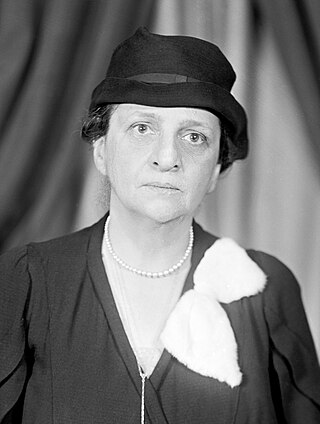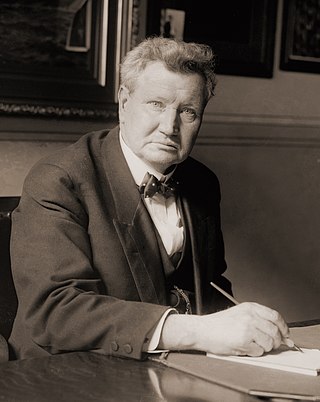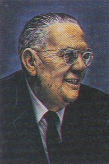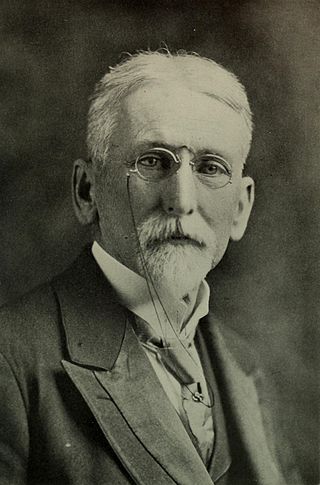
The United States Department of Labor (DOL) is one of the executive departments of the U.S. federal government. It is responsible for the administration of federal laws governing occupational safety and health, wage and hour standards, unemployment benefits, reemployment services, and occasionally, economic statistics. It is headed by the Secretary of Labor, who reports directly to the President of the United States and is a member of the president's Cabinet.
The Railway Labor Act is a United States federal law that governs labor relations in the railroad and airline industries. The Act, enacted in 1926 and amended in 1934 and 1936, seeks to substitute bargaining, arbitration, and mediation for strikes to resolve labor disputes. Its provisions were originally enforced under the Board of Mediation, but they were later enforced under a National Mediation Board.

The Labor Management Relations Act of 1947, better known as the Taft–Hartley Act, is a United States federal law that restricts the activities and power of labor unions. It was enacted by the 80th United States Congress over the veto of President Harry S. Truman, becoming law on June 23, 1947.

Frances Perkins was an American workers-rights advocate who served as the fourth United States Secretary of Labor from 1933 to 1945, the longest serving in that position. A member of the Democratic Party, Perkins was the first woman ever to serve in a presidential cabinet. As a loyal supporter of her longtime friend, President Franklin D. Roosevelt, she helped make labor issues important in the emerging New Deal coalition. She was one of two Roosevelt cabinet members to remain in office for his entire presidency.

William Julian Usery Jr. was an American labor union activist and government appointee who served as United States secretary of labor in the Ford administration.

William Bauchop Wilson was an American labor leader and progressive politician, who immigrated as a child with his family from Lanarkshire, Scotland. After having worked as a child and adult in the coal mines of Pennsylvania, he became active as a labor organizer.

The Federal Mediation and Conciliation Service (FMCS), founded in 1947, is an independent agency of the United States government, and the nation's largest public agency for dispute resolution and conflict management, providing mediation services and related conflict prevention and resolution services in the private, public, and federal sectors. FMCS is tasked with mediating labor disputes around the country; it provides training and relationship development programs for management and unions as part of its role in promoting labor-management peace and cooperation. The Agency also provides mediation, conflict prevention, and conflict management services outside the labor context for federal agencies and the programs they operate. The FMCS headquarters is located in Washington, D.C., with other offices across the country.

John Roy Steelman was the first person to serve as "The Assistant to the President of the United States", in the administration of President Harry S. Truman from 1946 to 1953. The office later became the White House Chief of Staff.
The National Labor Board (NLB) was an independent agency of the United States Government established on August 5, 1933, to handle labor disputes arising under the National Industrial Recovery Act (NIRA).

The National Civic Federation (NCF) was an American economic organization founded in 1900 which brought together chosen representatives of big business and organized labor, as well as consumer advocates in an attempt to ameliorate labor disputes. It favored moderate progressive reform and sought to resolve disputes arising between industry and organized labor.

George W. Taylor was a professor of industrial relations at the Wharton School at the University of Pennsylvania, and is credited with founding the academic field of study known as industrial relations. He served in several capacities in the federal government, most notably as a mediator and arbitrator. During his career, Taylor settled more than 2,000 strikes.
Cyrus S. Ching was a Canadian-American who became an American industrialist, federal civil servant, and noted labor union mediator. He was the first director of the Federal Mediation and Conciliation Service (FMCS) and the Wage Stabilization Board.
The Wage Stabilization Board (WSB) was an independent agency of the United States government whose function was to make wage control policy recommendations and to implement such wage controls as were approved. There were two agencies with the same name. The first, the National Wage Stabilization Board, was the successor to the National War Labor Board, and existed from January 1, 1946, to February 24, 1947. The second, the Wage Stabilization Board, was a part of the Office of Defense Mobilization and existed from September 9, 1950, to February 6, 1953.
The New York State Department of Labor is the department of the New York state government that enforces labor law and administers unemployment benefits.

The Newlands Labor Act was a 1913 United States federal law, sponsored by Senator Francis G. Newlands of Nevada and drafted by Bureau of Labor Statistics Commissioner Charles Patrick Neill. It created the Board of Mediation and Conciliation (BMC). The BMC was a precursor to today's National Mediation Board (NMB).
Leo Wolman was a noted American economist whose work focused on labor economics. He also served on a number of important boards and commissions for the federal government.

William Lea Chambers was a United States federal judge.

The Railroad Labor Board (RLB) was an institution established in the United States of America by the Transportation Act of 1920. This nine-member panel was designed as means of settling wage disputes between railway companies and their employees. The Board's approval of wage reductions for railroad shopmen was instrumental in triggering the Great Railroad Strike of 1922. The Board was terminated on May 20, 1926 when President Calvin Coolidge signed a new Railway Labor Act into law.
The National Defense Mediation Board (NDMB) was a United States federal agency established by Executive Order 8716 on March 19, 1941, that settled disputes between labor and management during the prewar defense period. The executive order established the NDMB as a tripartite agency of eleven representatives, four each from labor and industry and three from the public. The order vested in the agency the power to “exert every possible effort to assure that all work necessary for national defense shall proceed without interruption and with all possible speed.” The Board could use either mediation or voluntary arbitration to resolve disputes between management and labor in defense industries. If these methods failed, the Board was empowered to investigate controversies, conduct fact-finding, and formulate recommendations. During the ten months of its existence, the Board received a total of 118 cases of labor disputes. Since strikes were usually in progress when the Board received its cases, the NDMB's basic policy was to persuade unions to call off strikes in return for wage retroactivity and a promise of a hearing. This was successful in most cases, but, in the rare instances when parties did not heed Board recommendations, the Board forwarded matters to the White House. The NDMB ultimately collapsed because of a dispute involving the “captive mines,” during which the Board refused to grant union shop to the United Mine Workers (UMW). On January 12, 1942, the National Defense Mediation Board was superseded by the National War Labor Board.
The National War Labor Board, commonly the War Labor Board, was an independent agency of the United States government, established January 12, 1942, by an executive order of President Franklin D. Roosevelt, the purpose of which was to mediate labor disputes as part of the American home front during World War II.













